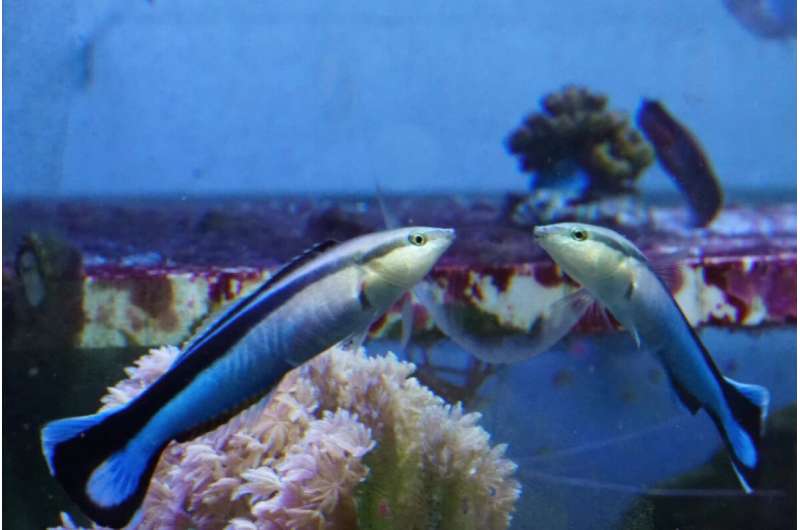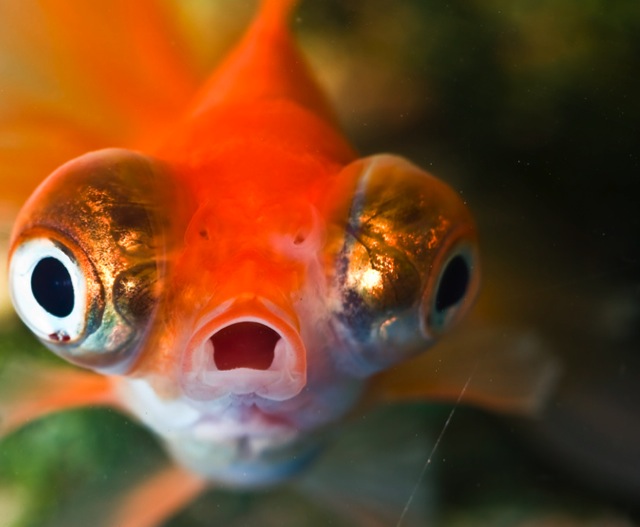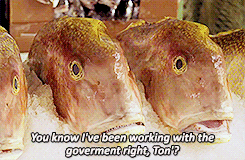
Posted on 02/17/2022 9:06:00 PM PST by LibWhacker

Mirror self-recognition (MSR) is seen as evidence for self-awareness and passing the mark test, in which animals touch or scrape a mark placed on their body in a location that can only be indirectly viewed in a mirror, is used to determine the capacity of an animal for MSR. Aside from chimpanzees, the evidence for other animals having passed the mark test has been criticized and thus inconclusive. By addressing criticisms placed against their previous work on the cleaner fish Labroides dimidiatus, an international team of researchers led by Masanori Kohda from the Graduate School of Science, Osaka City University, has provided further evidence to suggest the fish have the capacity for MSR.
This new experiment was recently published in PLOS Biology.
Professor Kohda says, "Previously, using a brown marking on the throat area of L. dimidiatus, we had shown three out of four cleaner fish to scrape their throats several times after swimming in front of a mirror, a number on par with similar studies done on other animals like elephants, dolphins, and magpies."
However, one of the criticisms laid against this result was sample size and the need for repeated studies showing positive results. Teaming up with researchers from the Max Planck Institute of Animal Behaviour in Germany and the University of Neuchâtel in Switzerland, this study increased the sample size to 18 cleaner fish, with a 94% positive result of 17 of them demonstrating the same behavior from the previous study.
But why a brown mark? "After looking at similar studies done on monkeys, pigs, dogs, cats, etc., that clearly tested negative, we wondered if the reason these animals didn't attend to the mark was because it didn't represent something in their natural environment they would be concerned about," says Prof. Kohda. "In our previous study, we used a brown mark, as it may look like a small parasite that is a main food source for L. dimidiatus."
A criticism in response to this was the possibility that the physical sensation of the mark, together with seeing the brown mark in the mirror, may trigger behavior that doesn't conclusively suggest MSR. To address this, the team tested how the fish would respond to a physical stimulus in their throat by injecting the brown mark 3 mm deep (as opposed to 1 mm). At such a depth, the mark was hardly visible, yet they found that fish with the deeper injection scraped their throat at similar rates, whether a mirror was absent or present. To further solidify the importance of using marks that are ecologically relevant to the animals in MSR studies, the team found that no fish injected with green or blue marks demonstrated the scraping behavior.
Lastly, some critics wondered if L. dimidiatus recognized the mirror image as itself and not another fish. A mirror-trained animal is one that is introduced to a mirror image of itself and goes through three steps. First, it expresses some kind of aggressive behavior, as it likely perceives the mirror-image as another animal; then it shows unnatural, yet non-aggressive movement, as it confirms the mirror image is not another animal; and last, it repeatedly looks at its own body with no aggression. At this point MSR is possible as it can now see the mark and try to scrape it off.
Prof. Kohda says, "Our previous study demonstrated MSR in L. dimidiatus; however, studies with other animals have shown that simply moving a mirror reignites aggressive behavior, suggesting the animal has only learned a spatial contingency, not MSR." To address this, the team transferred mirror-trained cleaner fish to a tank with a mirror on one side of the tank and then three days later to a tank with a mirror on the other side, and saw the fish show no aggression toward their mirror image in both tanks.
Also, to ensure the L. dimidiatus that passed the mark test truly are recognizing themselves, they placed mirror-trained fish in adjacent tanks that were separated by transparent glass. After two to three days, when fish largely reduced their aggressive behavior towards each other, they were marked the standard way the following night. None of the fish scraped their throat during the 120 mins of exposure to each other the following morning.
"This result suggests that a visual, ecologically relevant stimulus on another fish is not enough to induce throat scraping on marked subjects," says Prof. Kohda. "We still have much work to be done, especially quantitatively, to show that fish, as well as other animals, have the capacity for MSR; however, as a result of this study, we reiterate the conclusion of our previous study that either self-awareness in animals or the validity of the mirror test needs to be revised."
Fish are pretty much robots.
Thus is nonsense.

😂


That would explain why some of them live in the dark.
But do fish know they are in water?
Fish: “Do those humans know they are not in water?”

I read the article with interest to see how they measured self awareness under the fish test.
How difficult would it be for a robot, wouldn’t even have to be an A.I., to be able to recognize itself, recognize a mirror and understand it’s function. Visual object recognition should do the job.
Combined that with some self maintenance routines, including cleaning itself. And you got basic self awareness.
My robotic vacuum senses when it’s getting low on power and finds it’s charging station. That is literally a form of self awareness.
My vacuum can’t pass the mirror test because it’s blind. But a blind person is aware. Whatever that means.
So when does a program or an A.I. considered “Aware”. And can you prove the fish is aware, based on how you define that?
sounds fishy...
Porpoises (Dolphin) have shown preening activity in front of a mirror introduced to their tanks: But they’re “smart” mammals, and fish are not even close in intelligence; otherwise, I’ll not criticize the results.—could be real...
This is what happens when schools demand an “original research paper”, instead of what mankind really needs in research.
LOL!
I’ll believe the orange one is a dog before I’ll believe the other one is a woman.
Good points.
If the solipsists were right and each of us can only be sure that self is all that can be known to exist, it wouldn’t seem we could say much about AI or fish or even each other being self-aware, since even the existence of those things is uncertain. How could something that doesn’t exist be self-aware?
Will have to ask a philosophy friend of mine. It ought to get a laugh; I don’t think the solipsists were ever taken too seriously.
Ping!
Disclaimer: Opinions posted on Free Republic are those of the individual posters and do not necessarily represent the opinion of Free Republic or its management. All materials posted herein are protected by copyright law and the exemption for fair use of copyrighted works.